There is a very interesting picture was posted in the official TypeScript blog.

I wonder what the @ (at sign) symbol is doing there since (as far as I know) it cannot be used in JavaScript identifiers.
There is a very interesting picture was posted in the official TypeScript blog.

I wonder what the @ (at sign) symbol is doing there since (as far as I know) it cannot be used in JavaScript identifiers.
The big news this week is the merging of AtScript and TypeScript.
The following example from the AtScript documentation...
@Component()
class MyApp {
server:Server;
@Bind('name') name:string;
@Event('foo') fooFn:Function;
@Inject()
constructor(@parent server:Server) {}
greet():string {}
}
Compiles into the following JavaScript...
function MyApp() {}
MyApp.properties = {
'server': { is: Server },
'name': { is:string,
annotate: [new Bind('name']},
'fooFn': { is:Function,
annotate:[new Event('foo')]}
}
MyApp.annotate = [
new Component(),
new Inject()
];
MyApp.parameters = [
{is:Server, annotate:[parent]}
];
MyApp.prototype.greet = function() {}
MyApp.prototype.greet.returns = string;
AtScript was planned to be a layer on top of TypeScript (i.e. a super-set of a super-set) - but now the two projects are one.
Annotations are described thus:
Annotations can only be placed on functions.
An annotation placed on a class is an annotation placed on the class’ constructor function.
An annotation placed on a field gets moved to the constructor function.
All annotations are translated as properties on a function.